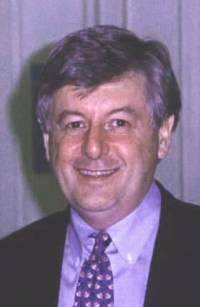Paul Frampton
| Paul Frampton | |
|---|---|

UNC Faculty image of Paul Frampton uploaded in 2006
|
|
| Born |
31 October 1943 Kidderminster, England |
| Fields | particle phenomenology |
| Institutions | UNC-Chapel Hill |
| Alma mater | Brasenose College, Oxford |
| Doctoral advisor | John C. Taylor |
| Known for | Model building |
Paul Howard Frampton (born 31 October 1943) is an English particle phenomenologist. From 1996 until 2014, he was the Louis D. Rubin, Jr. Distinguished Professor of physics and astronomy, at the University of North Carolina at Chapel Hill. Born in Kidderminster, England, he attended King Charles I School, 1954–62, then Brasenose College, Oxford, 1962–68. He received BA (Double First) in 1965, MA, DPhil in 1968, and DSc in 1984, degrees all from Oxford. He is a Fellow of the American Association for the Advancement of Science (1990) and the American Physical Society (1981). In 1987 he was the project director for siting the Superconducting Supercollider, in North Carolina. A Festschrift for his 60th birthday has been published.
In 2012, Frampton was convicted of drug smuggling as a drugs mule in Argentina. Frampton said during the trial that he was the victim of a scam.
His DPhil thesis analyzed the relationship between current algebra and superconvergence sum rules, and contained a 1967 sum rule. In 1970, he analyzed the absence of ghosts in the dual resonance model.
Three examples of his model building are the chiral color model, in 1987, which predicts axigluons; the 331 model, in 1992, which can explain the number of quark-lepton generations, and predicts bileptons; his proposal, in 1995, of the binary tetrahedral group as a flavor symmetry. All three serve as targets of opportunity for the Large Hadron Collider (LHC). In 2002, he built a model relating matter–antimatter asymmetry in the early universe to measurements possible on Earth. In 2015, he showed that the 331-model predicts long-lived quarks accessible to Run 2 of the LHC.
...
Wikipedia
